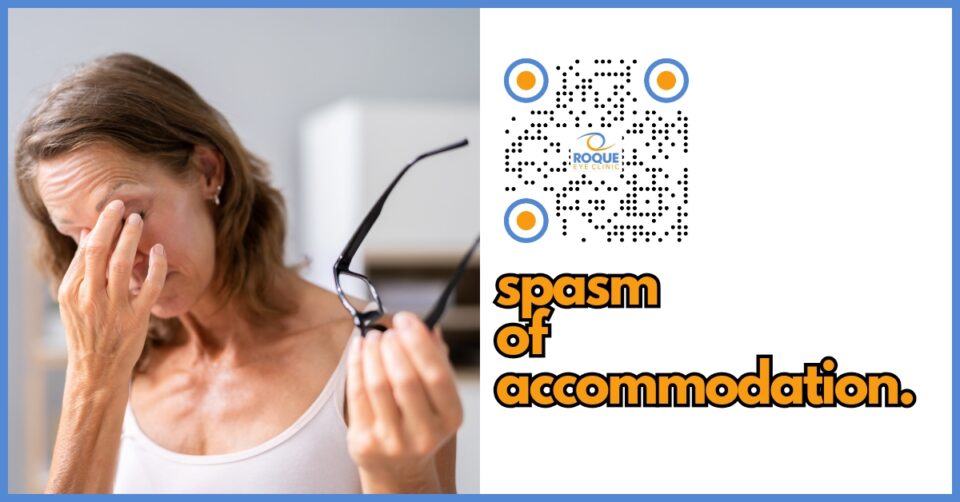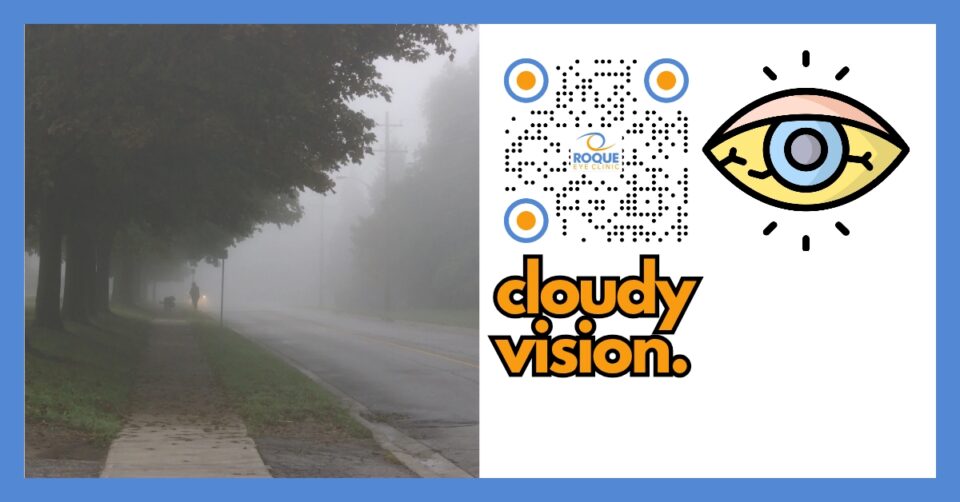Understanding and Managing Spasm of Accommodation: Symptoms, Treatment, and Prevention
Key Learning Points
- Spasm of Accommodation is a condition where the eye's focusing muscle remains in a state of excessive contraction, leading to blurred vision, headaches, and eye strain.
- The condition is often linked to prolonged near-work activities such as reading or screen use and is more common in younger individuals.
- Symptoms include difficulty focusing on distant objects, fluctuating vision, eye pain, and fatigue.
- Diagnosis involves a comprehensive eye examination, including refraction tests and assessment of the eye's focusing ability.
- Treatment typically includes vision therapy, proper eye care practices, and sometimes corrective lenses.
- Prevention involves regular breaks from near work, proper lighting, and maintaining good posture while reading or using screens.
- Patients can manage symptoms and prevent recurrence through lifestyle adjustments and consistent follow-up care.
Understanding Spasm of Accommodation
Spasm of Accommodation is a condition affecting the eye's ability to focus on objects at different distances. It occurs when the ciliary muscle, responsible for adjusting the lens's curvature, contracts excessively and fails to relax properly. This involuntary and sustained contraction leads to visual disturbances, particularly difficulty focusing on distant objects.
To illustrate, imagine the ciliary muscle as a rubber band. Normally, it stretches and relaxes smoothly, allowing the eye to shift focus between near and far objects. In Spasm of Accommodation, the rubber band becomes too tight and doesn’t loosen easily, causing the vision to blur, especially when looking at things far away.
Receiving a diagnosis of Spasm of Accommodation can be concerning, especially when it impacts daily activities. It's important to understand that this condition, while uncomfortable, is manageable with proper care. Treatment focuses on relieving symptoms and preventing future episodes, allowing you to regain comfort and clarity in your vision.
Think of Spasm of Accommodation as a muscle cramp in your eye. Just as a leg cramp needs rest, stretching, and sometimes therapy, your eyes need a similar approach to relax and function properly. With patience and consistent care, you can effectively manage the symptoms and enjoy clear vision once again.
Symptoms of Spasm of Accommodation
Individuals with Spasm of Accommodation may experience a range of symptoms, including:
- Blurred Vision: Primarily for distant objects, but sometimes for near objects as well.
- Eye Pain: Often described as a dull ache around the eyes, particularly after prolonged near work.
- Headaches: Typically occurring after tasks that require focusing, like reading or using digital devices.
- Fluctuating Vision: The ability to see clearly may vary throughout the day.
- Eye Fatigue: A feeling of tiredness in the eyes, even after short periods of activity.
These symptoms can be frustrating and impact daily activities such as driving, reading, or computer work.
Causes of Spasm of Accommodation
Several factors can contribute to the development of Spasm of Accommodation:
- Prolonged Near Work: Activities that require sustained focus, such as reading, writing, or using digital devices, can strain the eye's focusing system.
- Stress and Anxiety: Mental stress can exacerbate the condition, as it may cause the muscles around the eyes to tense up.
- Uncorrected Vision Problems: Issues like hyperopia (farsightedness) or astigmatism can lead to overexertion of the ciliary muscle.
- Inappropriate Use of Eyeglasses: Wearing incorrect prescriptions can strain the eyes, contributing to muscle spasm.
Diagnosis of Spasm of Accommodation
Diagnosing Spasm of Accommodation requires a comprehensive eye examination conducted by an ophthalmologist or optometrist. The process usually includes:
- Refraction Test: This determines the eye's prescription and checks how well the eyes focus on objects at various distances.
- Cycloplegic Refraction: Eye drops temporarily paralyze the ciliary muscle, allowing the examiner to determine the true refractive error without the influence of accommodation.
- Accommodative Function Tests: These assess the flexibility and endurance of the eye's focusing system.
Treatment Options for Spasm of Accommodation
Treatment for Spasm of Accommodation aims to relax the ciliary muscle and improve the eye's focusing ability. Common treatment strategies include:
-
Vision Therapy: This involves exercises designed to improve the coordination and strength of the eye muscles. It may include activities like focusing on objects at varying distances or using special lenses.
-
Cycloplegic Eye Drops: These are used to temporarily paralyze the ciliary muscle, giving it time to relax. They are usually prescribed for short-term use.
-
Corrective Lenses: In some cases, specially prescribed glasses or contact lenses can help reduce the strain on the eyes.
-
Lifestyle Modifications: Patients are encouraged to take regular breaks from near work, use proper lighting, and maintain good posture to reduce eye strain.
-
Stress Management: Addressing underlying stress or anxiety through relaxation techniques, counseling, or other interventions can be beneficial.
Preventing Spasm of Accommodation
Prevention is key in managing Spasm of Accommodation, especially for individuals prone to the condition. Here are some practical tips:
-
Follow the 20-20-20 Rule: Every 20 minutes, take a 20-second break and look at something 20 feet away. This helps relax the ciliary muscle and reduces eye strain.
-
Proper Lighting: Ensure your workspace is well-lit to avoid straining your eyes while reading or using digital devices.
-
Ergonomics: Adjust your chair, desk, and screen to maintain a comfortable position that minimizes eye stress.
-
Stay Hydrated: Dehydration can affect the eyes, so drinking enough water throughout the day is important.
-
Regular Eye Exams: Schedule routine check-ups with your eye doctor to monitor your vision and adjust your prescription as needed.
Post-Treatment Care
After initiating treatment, follow these steps to ensure proper healing and prevent recurrence:
-
Adhere to Your Treatment Plan: Use prescribed eye drops as directed and continue with any recommended vision therapy exercises.
-
Monitor Your Symptoms: Track any changes in your vision or comfort levels. If symptoms persist or worsen, contact your eye doctor promptly.
-
Maintain Regular Breaks: Even after treatment, continue taking breaks during near work to prevent the recurrence of symptoms.
-
Adjust Your Environment: Make changes to your workspace or reading habits to reduce eye strain.
-
Follow Up with Your Doctor: Attend all scheduled follow-up appointments to monitor your progress and make any needed adjustments to your treatment plan.
Frequently Asked Questions
-
What is Spasm of Accommodation?
- Spasm of Accommodation is a condition where the eye's focusing muscle remains in a state of excessive contraction, causing blurred vision and eye strain.
-
Who is most likely to develop Spasm of Accommodation?
- It is more common in younger individuals, particularly those who engage in prolonged near work, such as students and professionals who use digital devices extensively.
-
How is Spasm of Accommodation diagnosed?
- Diagnosis involves a comprehensive eye examination, including refraction tests and assessments of the eye's focusing ability.
-
Can Spasm of Accommodation be treated?
- It can be treated with vision therapy, corrective lenses, and lifestyle modifications. In some cases, cycloplegic eye drops may be used.
-
Is Spasm of Accommodation a permanent condition?
- It is not necessarily permanent. With proper treatment and preventive measures, many individuals experience significant improvement.
-
What can I do to prevent Spasm of Accommodation?
- Regular breaks from near work, proper lighting, and good posture can help prevent the condition.
-
How long does it take to recover from Spasm of Accommodation?
- Recovery time varies, but with consistent treatment and lifestyle adjustments, symptoms can improve within weeks to months.
-
Can stress cause a Spasm of Accommodation?
- Yes, stress and anxiety can contribute to the development of the condition by causing the muscles around the eyes to tense up.
-
Should I stop using screens if I have a Spasm of Accommodation?
- You don't need to stop using screens entirely, but taking regular breaks and adjusting your screen time can help manage symptoms.
-
When should I see an eye doctor for a Spasm of Accommodation?
- If you experience persistent blurred vision, eye pain, or headaches, it's important to consult an eye doctor for a proper diagnosis and treatment plan.
Bibliography
-
Rutstein RP, Daum KM. Anomalies of accommodation: A review. Optometry and Vision Science. 1998;75(5):361-371. doi:10.1097/00006324-199805000-00023.
-
Sterner B, Abrahamsson M, Sjöström A. The effects of accommodative facility training on a group of children with impaired relative accommodation--a comparison between dioptric treatment and placebo treatment. Ophthalmic and Physiological Optics. 1999;19(1):36-45. doi:10.1046/j.1475-1313.1999.00467.x.
-
Abdi S, Brautaset R, Yngve R. Accommodation facility training in a case of accommodative spasm: a case report. Journal of Optometry. 2007;5(2):86-90. doi:10.1016/j.optom.2007.02.002.
-
Rouse MW, Borsting E, Mitchell GL, et al. Validity of the Convergence Insufficiency Symptom Survey: A confirmatory study. Optometry and Vision Science. 2009;86(4):357-363. doi:10.1097/OPX.0b013e31819c8f6e.
-
Ciuffreda KJ, Rutner D, Kapoor N, Suchoff IB, Han ME, Craig S. Vision therapy for oculomotor dysfunctions in acquired brain injury: A retrospective analysis. Optometry and Vision Science. 2008;85(4):299-305. doi:10.1097/OPX.0b013e318169c6c6.
Take-Home Message
Spasm of Accommodation is a manageable eye condition that can cause discomfort and visual disturbances. You can significantly reduce symptoms and improve your quality of life with the right treatment and preventive measures. Regular eye exams, proper care during near work, and stress management are key to maintaining healthy vision and preventing recurrence.
BOOK AN APPOINTMENT
It takes less than 5 minutes to complete your online booking. Alternatively, you may call our BGC Clinic, or our Alabang Clinic for assistance.






